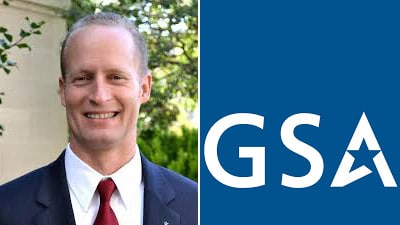
Data center metrics are a prism to watch the continued evolution of federal IT
Through the Centers of Excellence (CoE) initiative with the Agriculture Department and the move to Technology Business Management (TBM) standards, OMB is setting...
Best listening experience is on Chrome, Firefox or Safari. Subscribe to Federal Drive’s daily audio interviews on Apple Podcasts or PodcastOne.
If you wanted to track the government’s progress on IT modernization, there may not be a better approach than following the bouncing metrics of the data center consolidation initiative.
The Obama administration started out with a goal to reduce the overall number across the government. Then the Office of Management and Budget said optimization of current data centers was as important as reducing the overall number.

Then somewhere in there, OMB changed the definition of what a data center, is causing a huge increase in the overall number and a nose dive in success, followed by a quick rebound when closing a 3×3 closet with two servers counted.
Now OMB is expected to release yet another memo around data centers that, once again, will move the goal posts — whether they are forward, back or sideways it’s unclear. The data center memo is one of several expected in the coming weeks or months from OMB, which also is working on new Trusted Internet Connections (TIC) requirements and new guidance for protecting high value assets.
The good news is through the Centers of Excellence (CoE) initiative with the Agriculture Department and the move to Technology Business Management (TBM) standards, this may be the last data center memo for awhile.
Dan Pomeroy, the acting deputy associate administrator in the Office of Governmentwide Policy at the General Services Administration, said OMB recognized the government needed a new and better way to calculate costs and therefore savings when it came to data centers.
Pomeroy, who led the data center optimization initiative as well as the infrastructure optimization CoE before taking on this new role in September, said GSA worked with USDA to come up with eight categories to calculate the costs of data centers.
“We are looking at things like the cost of labor that will continue, but maybe it will be less as you reduce the number of data centers,” Pomeroy said. “We are asking what can you save across multiple parameters? Based on the square footage of a data center, there are different levels of savings. If you shut down a closet, there will be less savings then if you shut down a tier 3 data center.”
At the same time, GSA is ensuring the data center metrics are integrating with the TBM cost towers process. OMB is requiring agencies to implement TBM by 2022 under the President’s Management Agenda and as part of its effort to improve the capital planning and investment control (CPIC) processes.
Pomeroy said agencies needed a tool set to calculate savings and return on investment, and whose data would easily fit into the TBM structure.
USDA will further test out these new metrics as part of its effort to close 39 data centers under the CoE initiative. The agency already closed 21 data centers and expects to save $6.9 million to $8.5 million a year.
SSA bringing in industry best practices
On the other side of the IT modernization spectrum is the Social Security Administration. While SSA remained dogged by antiquated systems and processes, IT modernization is happening in some pockets.
For example, SSA expects most states to move to its new and improved Disability Case Processing System (DCPS) by the end of fiscal 2019. The DCPS rollout stands out as a major project in SSA’s five-year, $700 million IT modernization strategy, which it launched last year.
Rajive Mathur, the SSA CIO, said he’s borrowing an approach from his industry days where IT capabilities are based on a business-centric view.
To that end, Mathur said he’s implementing a product management and product manager approach across SSA’s IT efforts.
Mathur said a product owner asks the business or program managers questions such as: What is the strategy? How do we deliver on value? What are the planned product versions?
“We are not investing in a one-year, one product program. It will always be a multi-year view where we are creating value and delivering new capabilities early and often” Mathur said at the conference. “There is a big culture change I’m asking for by moving to product management.”
Latest Technology News
This concept is not necessarily new. CIOs over the years have moved toward having business or program connections in their offices. But what Mathur is doing come more from the venture capital world where companies are held to specific metrics to produce results.
Mathur said the product manager is like a mini-CEO who knows everything about their program.
“This is IT modernization at different levels where we are changing the relationships with the business offices,” he said. “The product function is in the CIO shop today, but over time I’d like to migrate it to the business shops.”
Read more of the Reporter’s Notebook
Copyright © 2024 Federal News Network. All rights reserved. This website is not intended for users located within the European Economic Area.
Jason Miller is executive editor of Federal News Network and directs news coverage on the people, policy and programs of the federal government.
Follow @jmillerWFED
Related Stories





